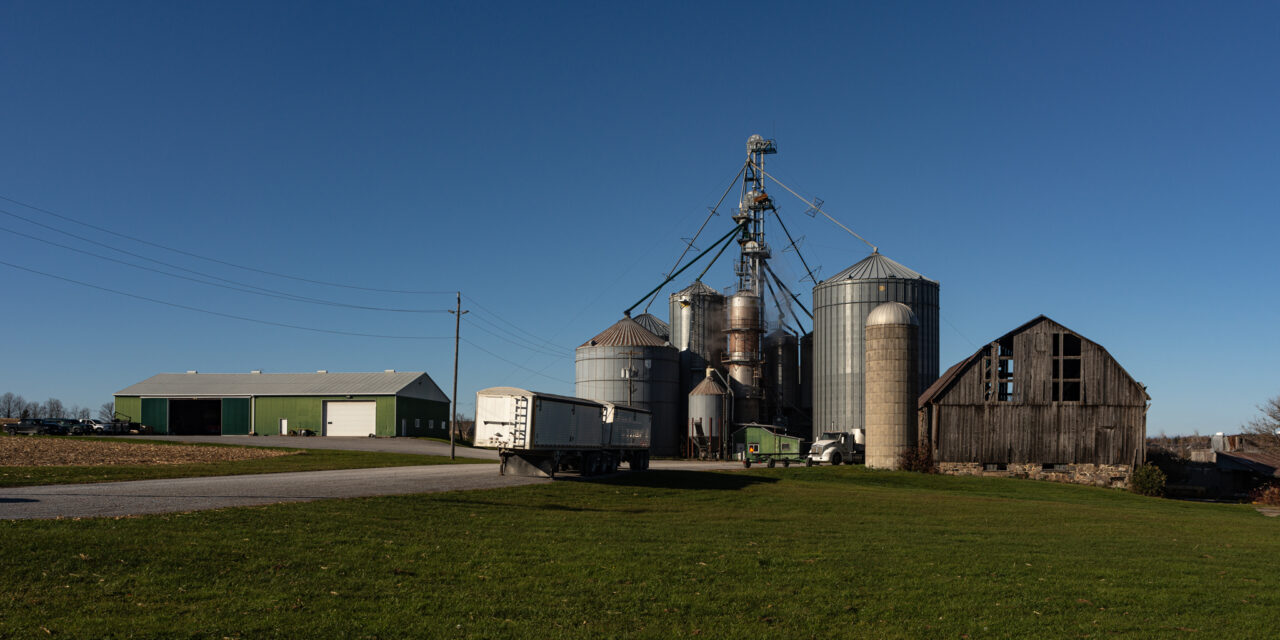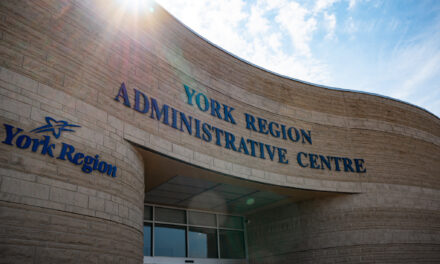- The 2024-2027 Agriculture and Agri-Food Sector Strategy focuses on three main pillars: promoting business and innovation, fostering a resilient local agri-food chain, and enhancing community outreach and education.
- The Strategy aims to attract new talent, support business succession planning, and build climate resilience, while also promoting local agri-food businesses.
- York Region’s agriculture and agri-food sector supports nearly 5,000 businesses and generates $3.8 billion in GDP.
- The sector provides approximately 67,000 jobs, with the food and beverage processing sector ranking as the fourth largest in Canada.
- Development pressures on farmland pose a challenge to long-term agricultural sustainability, with local leaders advocating for stronger protections to preserve agricultural lands.
- King Township Councillor Avia Eek emphasized the importance of making agriculture viable to protect farmland and called for increased government supports to strengthen the sector and ensure food security.
York Region’s agriculture and agri-food sector comprises nearly 5,000 businesses and contributes $3.8 billion annually in gross domestic product, according to a York Region report. Farms, food processors, retailers, and restaurants provide approximately 67,000 jobs, with the food and beverage processing sector recognized as the fourth-largest in Canada.
The 2024-2027 Agriculture and Agri-Food Sector Strategy (the Strategy) was shaped by input from over 200 stakeholders. It centres on three pillars: strengthening business, entrepreneurship, and innovation; enabling a resilient and diverse local agri-food chain; and bolstering outreach, education, and communication.
The Strategy aims to support skills development and grow the labour force, bringing fresh talent into the sector. Business succession planning initiatives will work to ensure long-term retention of agricultural and agri-food enterprises, ultimately increasing the number of active participants.
Additional focus areas include building climate resilience, developing circular economy programs, and creating a “supportive environment for equity-deserving and Indigenous communities.” Networking, collaboration, workshops, and educational opportunities, as well as support for the agri-tourism industry, are part of the plan.
Outreach efforts will promote funding opportunities and encourage collaboration with various levels of government on food-related projects and events. A communications plan will spotlight businesses, showcasing “the impact of York Region’s agriculture and agri-food sector and the importance of the land base for sector growth at local and provincial levels.”
Promotion of locally grown and produced food and businesses will “raise the profile” of local agriculture and the agri-food industry. The Strategy will also explore urban agriculture expansion, including innovative opportunities like vertical farming.
Approximately 30% of York Region’s land area is farmland, with 23% of that located in Whitchurch-Stouffville. Although Census of Agriculture data shows that the number of farms in Stouffville dropped from 116 in 2016 to 83 in 2021, the total farmed acreage nearly doubled to 30,682 acres.
The trend is further reflected in Whitchurch-Stouffville data on owned and leased farmland. In 2021, 10,323 acres were owned, up from 8,886 acres in 2016. Rented farm acreage more than doubled in the same period, rising from 9,118 to 21,175 acres.
This shift is reflected throughout York Region, which is currently home to 604 farms—a 15% decrease over 2016. However, the average farm size has grown to 223 acres, an 11% increase. York Region farms currently generate about $390 million in annual revenue.
“Overall, the Region’s agriculture sector remains strong, with total operating farm revenue of $2,903 per acre, ranking first in the Greater Toronto Area and third highest in the Golden Horseshoe,” the report details. “The Strategy…positions York Region as the agri-food hub for businesses, driving growth and contributing to the economic vitality of the Region.”
Despite the economic opportunities being pursued, increasing urbanization and growth are putting pressure on farmland throughout the Region. Rising land values and rental costs threaten sustainable, long-term farming practices.
Avia Eek, King Township Councillor, farmer, and Chair of York Region’s Agriculture and Agri-Food Advisory Committee, addressed the Strategy during York Regional Council’s October 10 meeting. She described development pressures on farmland as unfortunate, noting the risks of using farmland for housing and growth-supportive infrastructure.
“While we do have a housing crisis, you can’t just grow food anywhere,” Eek said, emphasizing that once farmland is developed, it can no longer support agriculture. “You can’t just bulldoze and start farming again; that land has already been destroyed.”
Richmond Hill Mayor David West echoed these concerns, questioning how farmland could be better protected to mitigate growth pressures. “If we’re not going to be making a statement on how important it is to protect land cordoned off for agriculture and make that protection permanent, we’re not going to have anything left at the end,” he said.
“The best way to protect farmland is to make agriculture viable,” Eek replied. “If it’s not viable, the farmer is going to throw up his hands…and say, ‘Forget it, we don’t want any part of this, we’re selling.’” She noted the difficulty in expecting people to farm land they own, especially as many smaller farms were bought by non-farmers during the COVID-19 pandemic.
Regional Councillor Naomi Davison of Georgina also focused on farmland protection after acknowledging the importance of approving the Strategy and the support it will provide the sector. “We have thousands of hectares of land that can be converted to residential at the will of a developer,” she said. “I would challenge this council to…continue asking these questions and continue to put in protections for agricultural lands, because they are absolutely at risk.”
Beyond the Strategy, Eek called for greater Federal and Provincial assistance like additional funding and subsidies. Such provisions would help bolster the viability of farming and protect farmland in the process.
“Collaboration and partnerships will be key to the success and implementation of the Strategy,” Eek told Regional Council Members. “We look forward to continuing to work together to strengthen relationships across our communities that will contribute to the growth of the vibrant agriculture and agri-food sector here in York Region.”
In an interview with Bullet Point News, Eek expanded on her vision for the Strategy’s outcomes, expressing hope it will elevate the agriculture sector’s profile akin to manufacturing. “I want to see more businesses come into York Region… I want that agri-food excitement to be there so that when people think of York Region, they think of a food hub.”
Eek also shared a long-term view for York Region’s agriculture. “If we follow climate modelling, Canada is positioned to maybe not be the next California, but pretty darn close,” she said. “We have the water, we have the land, and it’s about looking at the big picture: are we going to be in a position to feed ourselves down the road?”
Citing global conflicts and climate change impacts on major agricultural centres, Eek questioned, “Do we want to be a country that is over-dependent on other nations for our food supply?” She added, “Personally, what I would like to see this Strategy continue to do is make our politicians understand this.”
“We need to see them recognizing the importance of agriculture not just for feeding us, but for providing some level of food security,” she said. “And perhaps not the same kind of food security that we’re used to.”
Eek urged York Region residents to participate in key decision making processes like Official Plan reviews to avoid future consequences. “If you aren’t at the table, you’re on the menu,” she concluded. “We’re only going to achieve these goals if politicians keep paying attention, and if we hold their feet to the fire.”





